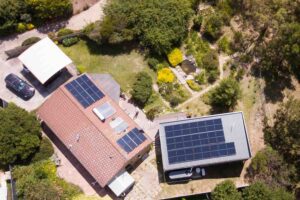A world-first solar sharing trial using an industry-leading Australian software platform by has found peer-to-peer energy trading to be technically feasible, popular with consumers, and a potential boon for network operators; but not likely to take off under current network tariff structures.
The RENeW Nexus project used Power Ledger’s blockchain technology to track the transactions of rooftop solar energy traded between 48 households in Fremantle, Western Australia, from late 2018 until June 2019.
The trial was led by WA’s Curtin University with backing from the federal government’s Smart Cities and Suburbs Program, and in partnership with Murdoch University, City of Fremantle, Landcorp, Synergy, Western Power, Water Corporation, Power Ledger, energyOS, CSIRO/Data 61 and CISCO.
As well as trialling P2P solar trading the project also includes a study of a distributed Virtual Power Plant (VPP) as well as a microgrid with a 670kWh community battery – currently under construction – that will service homes within the East Village housing development in Fremantle.
On the P2P front, Power Ledger’s platform worked with the existing electricity network and energy retailer to enabled households to buy and sell excess rooftop solar energy in near real-time, with residents able to view electricity usage in 30-minute intervals.
A 60-plus page report on the project, published on Thursday by Power Ledger and Curtin and Murdoch Universities, found blockchain-enabled solar trading to be technically feasible, and likely to be well supported by consumers, but not-so financially rewarding under current tariff structures.
“Participants had a positive view of P2P energy trading and could see its benefits but stated that changes to the tariff structure would be required to make it attractive,” the report said.
The report noted this could be remedied by coupling a P2P with a dynamic feed-in tariff, as a way to deal with excess solar during the day without the need for government subsidies.
The report also said policymakers should consider coupling P2P with the ability for households with batteries to trade via a virtual power plant “to monetise their excess solar at all times of the day, without any subsidy, and also provide services to the grid”.
On VPPs, the report highlighted their potential to give solar battery owners access to additional revenue streams, boosting the case for adding battery storage, while also boosting energy autonomy by between 30% and 68%.
To read the full story on RenewEconomy sister site One Step Off The Grid, click here…










